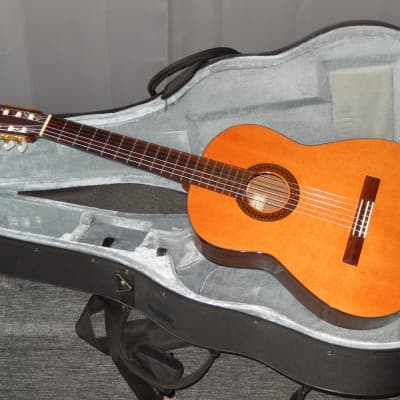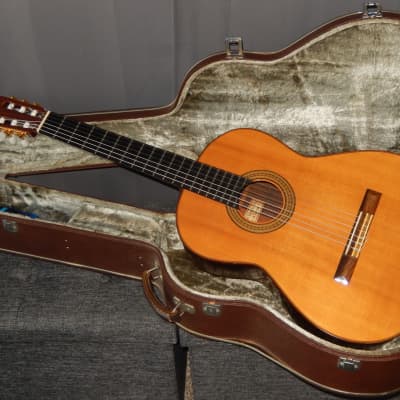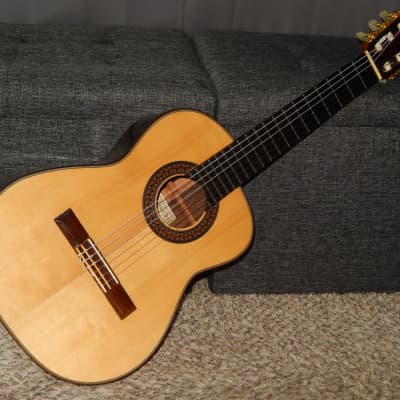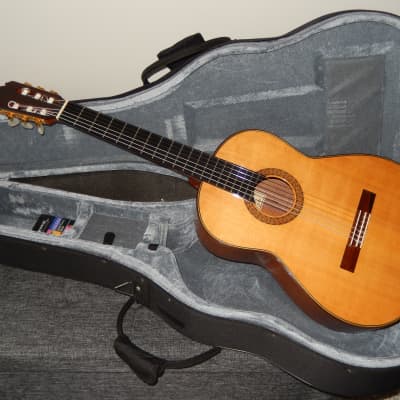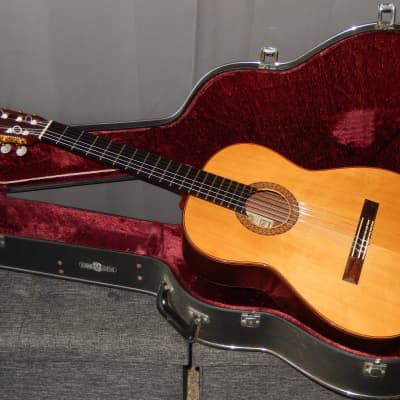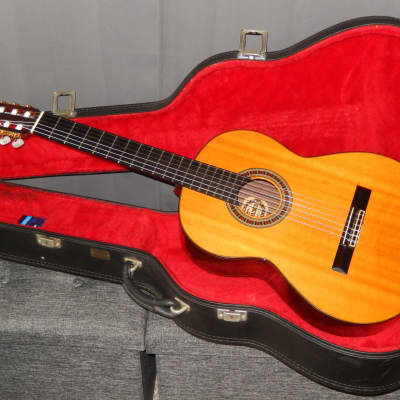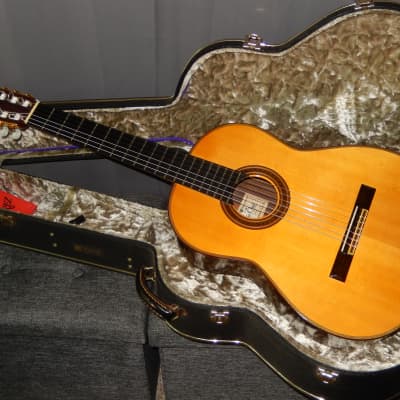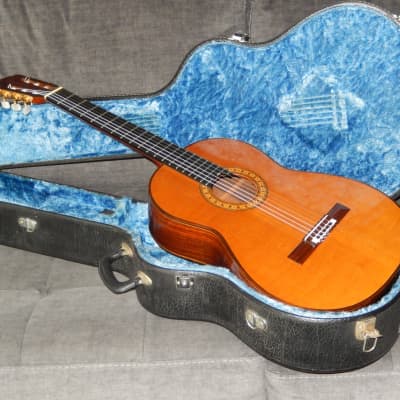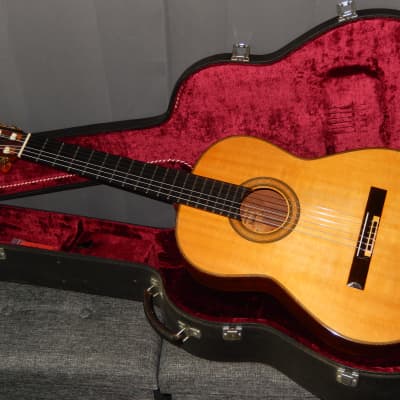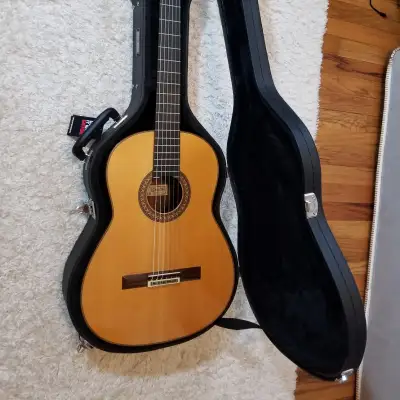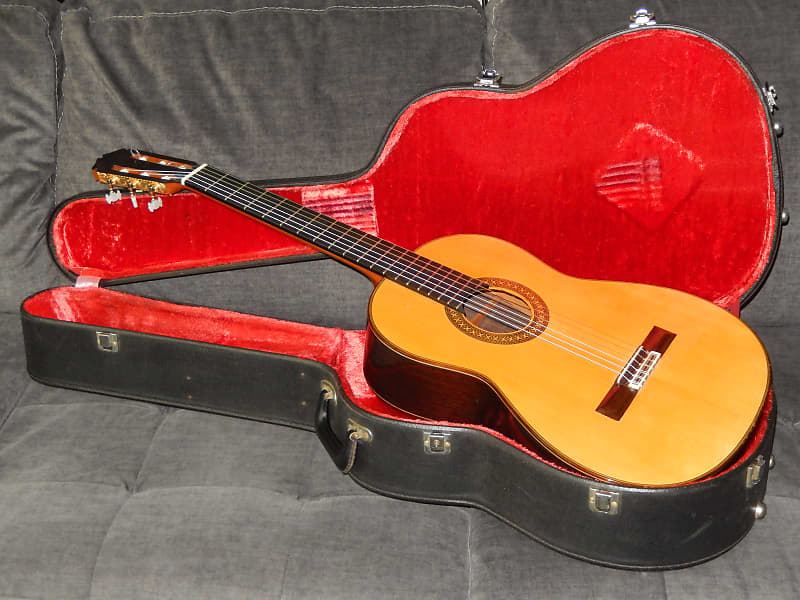

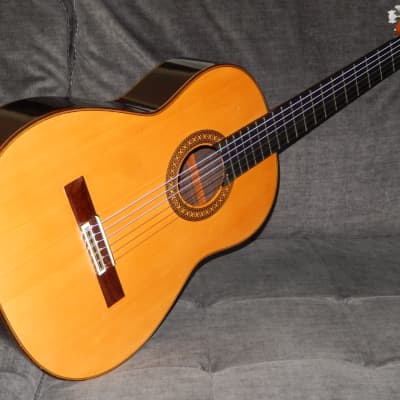
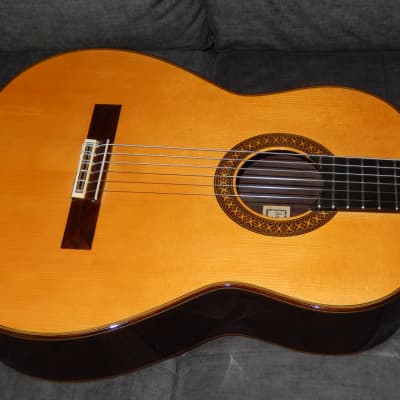
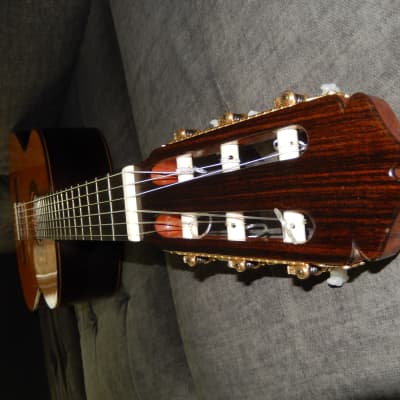
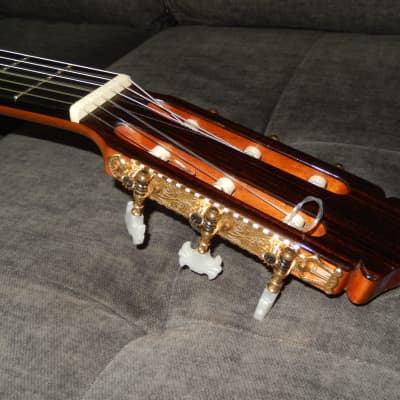
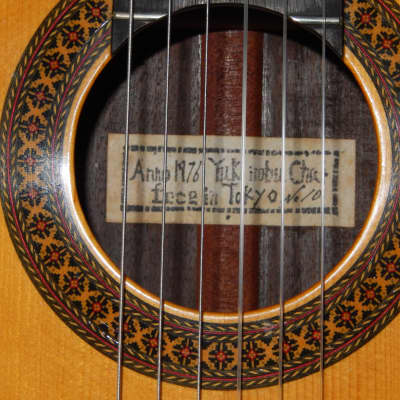
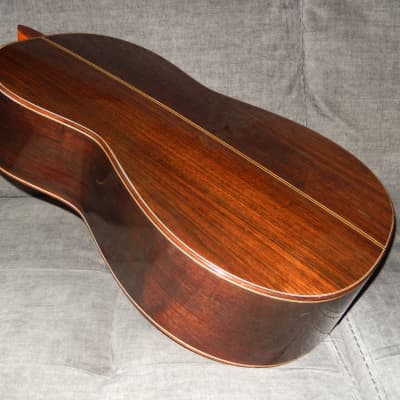
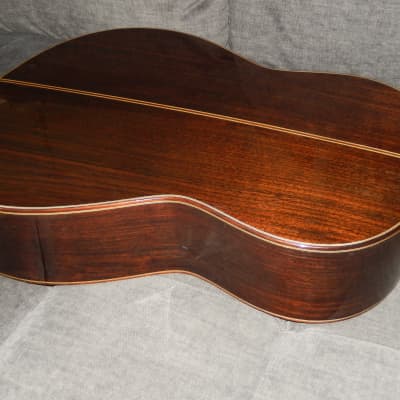
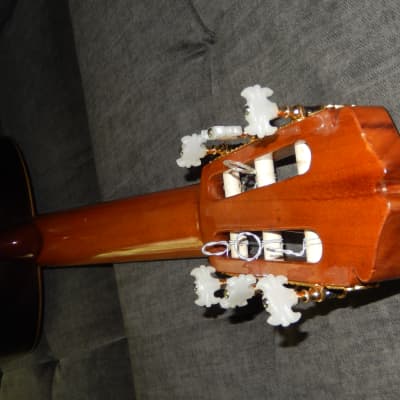
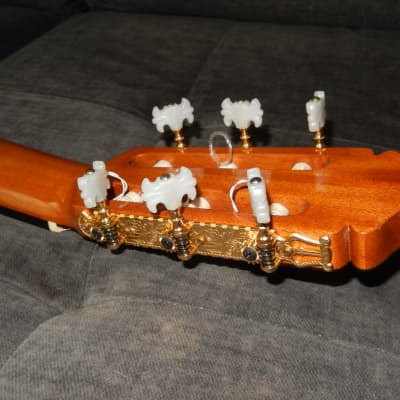
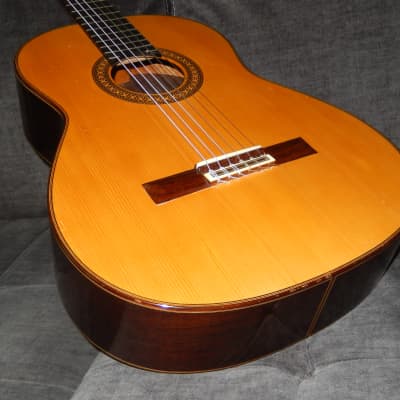
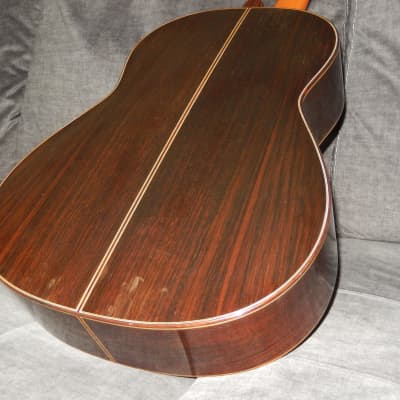
Yukinobu Chai Classical Concert Guitar No10 1976
This guitar was made in 1976 by Master Luthier Yukinobu Chai. Yukinobu’s career started in late 1960s and over the years he became one of the highest respected luthiers in Japan. Most likely the major reason for that were very moderate prices for his wonderful instruments.
In that respect Yukinobu had business philosophy very similar to that represented by Ryoji Matsuoka, Kazuo Yairi or brothers Hiroshi and Mitsuru Tamura. In 1983 top Masaru Kohno model 50 or Sakazo Nakade Master 50 were priced 500 000 yen. In 1984 top Masaru Kohno model Maestro or Sakazo Nakade Master 80 were priced 800 000 yen. By 1985 Yukinobu Chai and Tamura brothers were still pricing their top models at 500 000 yen even though their instruments sounded no different than those made by the “elite” luthiers. In 1985 top R.Matsuoka models were M200 & MH200. Kazuo Yairi's top model was YC200.
In early/mid 1970's Yukinobu was still relatively unknown luthier and his prices were actually lower than those proposed by Tamura brothers for similar grade guitars. Until 1974 Yukinobu's model 10 was made with solid figured Brazilian Rosewood b/s. Until early 1976 his model 10 was made with Jacaranda (straight-grain Brazilian Rosewood) b/s.
This guitar being priced 100 000 yen in 1976 was worth 75% of starting yearly salary of Japanese college graduate. Yet, just like many other less prominent Japanese luthiers of that era, Yukinobu Chai simply had to deliver much more for the same price in comparison with Masaru Kohno models. In fact you will never find Kohno No10 that would sound even close to guitar you are looking at.
This guitar offers immense volume and super response, combined with deeply charming (characteristic to BR) and colorful tonality: sweet, very colorful & ringing trebles, somewhat metallic & deeply resonating and full of overtones basses, all well balanced, with superb note clarity and separation, and all with very impressive sustain. With its current action it is simply a “joy to play”. If you wanted to purchase the same class brand new guitar made by leading Japanese luthier, you would have to pay no less than $6000.
This guitar remains in overall very good structural and functional condition. Its body bears several minor dents, scratches and abrasions. The "fingertip-like" discolorations within the finish on the back are greatly exaggerated on the pictures. In regular light they are rather mild and guitar's back is deeply brown and glossy. Such discolorations are quite common on Japanese made guitars of that era.
On the left lower bout of the soundboard there is a discoloration within the finish surrounding a scratch-like wavy mark. Finish itself looks like original. I have not found any signs of crack on the inside, just a diagonal brace. It is possible that someone has repaired a deeper scratch or surface crack in the finish by applying glue form the top. No matter what it was it is fixed now and all that's left is a very light scar. Although its tuning keys are somewhat bent, they work fine. Besides all of these mentioned above imperfections, guitar is ready to be played "out of the box". Very importantly its neck is straight, fingerboard and leveled frets are in very good condition and action very "player friendly".
Specifications:
Top: Solid Spruce/Cashew lacquer
Back & Sides: Solid Straight Grain Brazilian Rosewood/Cashew lacquer
Neck: Mahogany
Fingerboard: Ebony
Scale: 650 mm
Nut width: 51 mm
Its action is set to 3.50 mm under E6 and 3.00 mm under E1, with still extra room on the saddle.
This guitar will be shipped in used hard-shell case in good condition.
Real Value of Japanese Vintage Guitars
The key to understand value of vintage Japanese guitars is to acknowledge galloping devaluation of Japanese yen in 1960s & 1970s. This devaluation was somewhat slower in 1980s. The best measure of this devaluation is Starting Yearly Salary of Japanese College Graduate (SYSJCG).
SYSJCG in 1965 was 19 600 yen, in 1969 – 34 600 yen, in 1970 39 200 yen, in 1972 – 62 300 yen, in 1975 79 200 yen, in 1977 86 200 and in 1980 - 123 000 yen.
During 1960s and most of 1970s model numbers of Japanese guitars were strictly interconnected with their prices in Japanese yen. In late 1970s and during following decades model numbers were no longer strictly associated with their prices. Many Japanese guitar makers introduced model names instead of model numbers. Others were still using model numbers with addition of letter abbreviations or other symbols.
The best and only logical approach while evaluating real value (real grade) of vintage Japanese guitar is to compare its price in Japanese yen with SYSJCG during the year guitar was made.
Any guitar priced 100 000 in 1970 (labelled usually as No10) would be priced 200 000 yen in 1975 (relabeled to No20 or 2000), 300 000 yen in 1977 (labelled as No3, No30 or 3000). Starting in 1977 Masaru Kohno introduced his new models No40 priced 400 000 yen and No50 priced 500 000 yen. By 1984 Kohno started using model names instead numbers and was raising their prices as he was pleased. Model 50 became model “Maestro”, model 40 became model “Special”, model 30 became model “Professional-J”. Naturally other Master luthiers were doing the same name/price changes.
Knowing all of that, you can bet on that Masaru Kohno No50 made in 1982 is practically the same grade instrument as Kohno No20 made in 1972, or Kohno no 30 made in 1976. Kohno No40 made in 1982 is exactly the same grade instruments as Kohno No15 made in 1972 or Kohno No20 made in 1975.
It is very important to mention that if modern era luthiers are using 40 years old woods to make a classical guitar, its price is at least $8000.
Reverb Buyer Protection
Reverb has your back if your item is lost, damaged, or doesn't match its description. Simply report any issues within 7 days and we'll help you get a full refund.Learn more about Reverb Buyer Protection.
| Listed | 5 years ago |
| Condition | Very Good (Used) Very Good items may show a few slight marks or scratches but are fully functional and in overall great shape.Learn more |
| Brand | |
| Model |
|
| Finish |
|
| Categories | |
| Year |
|
| Made In |
|
| Body Shape |
|
